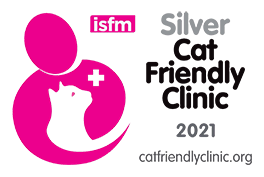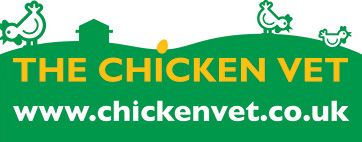Get Your Friends Going Again! – Exercises For Arthritic Dogs
As we talked about in our blog on arthritis treatment, management of arthritis in dogs is ‘multimodal’. This means we attack the disease from all angles.
- Pain relief
- Environment modifications
- Diet and weight management
(the above are all discussed in the arthritis treatment blog)
Appropriate exercise
Exercise can help improve joint mobility, reduce pain and inflammation, strengthen your dogs muscles and keep then active and happy. Reduced exercise massively impacts on a dog’s quality of life. Every dog will need their own personalised exercise plan which we can help you with, but here are some basics for you to try. Exercises to consider for a dog with osteoarthritis pain.
- Walking – start with short, gentle walks; gradually increasing the time and distance as your dog’s ability improves. Try finding a level path as hills can be a challenge to start with. Consider terrain –uneven terrain will be more difficult.
- Swimming – the buoyancy of water reduces the pressure on the joints, making it easier for dogs to move and exercise. The cohesion and turbulence of water provide a resistant force when moving through it, helping increase muscle strength, endurance, and the range of motion of the joints. It is preferable to use an underwater treadmill or pool as the increased water temperature helps increase blood flow to the limbs and provides a soothing environment. Swimming in very cold water could result in muscle spasms and seizing up of joints.
- Range of Motion (ROM) exercises (care ) – OA leads to joint stiffness and reduced range of motion. The Muscles, tendons and ligaments around the joint also lose flexibility. This causes pain and lameness. Other joints have to compensate and so become hypermobile which causes further pain and dysfunction. Also the cartilage in joints received nutrition from the fluid within them. This fluid is moved around the joint reaching the cartilage more effectively during full ROM. Maintaining normal ROM and flexibility is, therefore, a very important part of OA management.
How to perform ROM exercises
When performing these exercises, we are working on flexion and extension of the joint.
- hold firmly on either side of the joint.
- Flexion – bend the leg upwards until you meet resistance, this should not be painful.
- OA causes a reduced ability to flex and extend joints so do not be surprised if your dog resists after only partial flexion / extension.
- Hold this position for 5-10 secs
- Then straighten the leg to extend the joint to a comfortable level and hold for 5-10 secs.
- Ideally do this 5-10 times but be led by your dog!
- If your dog is not keen on having their legs held you can gently squeeze a toe and this will encourage them to bend their leg.
- Only do this when your dog’s legs are warmed up e.g after a walk.
- Ideally do these daily but be led by how well your dog responds. Lots of encouragement and treats will help!
- The main joints to focus on are the elbows, carpi (wrists), stifles (knees) and hocks. In the hind limbs the stifles and hocks can be flexed and extended simultaneously.
Please see our videos on this to help you!
Stretching
Gentle stretching can also help improve joint mobility and flexibility.
Stretching tips:
- Consistency rather than intensity; aim to do just a few minutes every day.
- Always use slow and gentle motions.
- Follow your dog’s lead, stop if they start to show any discomfort.
- Make it fun – lots of encouragement and rewards. The key areas to focus on are hips, shoulders and back.
Hip flexor stretch
- with your dog standing, grasp one of their back legs just above the knee.
- Slowly move the leg backwards until you reach resistance.
- Hold the leg here for 15-20 seconds.
- Repeat 2-3 times for each back leg.
Results
- Increased mobility of hips and spine
- Improved condition of the lower back
- Decrease in pain.
Shoulder flexor stretch
- with your dog standing up, grasp one front leg just above the elbow with one hand and place your other hand under the elbow to stabilise it.
- Slowly move the leg forwards until you reach resistance.
- Hold the leg here for 15-30 secs.
- Repeat 2-3 times for each front leg.
Results
- Improved range of motion of the shoulders, chest and upper back.
- Increased breathing capacity.
- Decreased pain.
Back stretch
- with your dog standing, move to one side of their body
- with a treat in your hand, move your hand slowly along their body from their face towards their tail.
- Encourage your dog to follow the treat with their eyes turning only their head. This should create a C shape curve in their spine.
- Hold this position for 15-30 secs then give them the treat.
- Repeat 2-3 times each side.
Results
- improved mobility in the spine.
- Decrease in pain.
These stretches can be combined with massage which also helps increase mobility, improve blood flow and decrease anxiety.
Games and activities
Due to many arthritic dogs being unable to exercise as much as they used to, a reduction in their confidence and quality of life occurs. Using games and enrichment activities can help keep them mobile as well as mentally stimulated. When dogs are enjoying play, happy hormones such as seratonin are released in their brain which not only make them feel good but are the body’s own natural pain killers.
Food based games are very popular.
- Licky mats, puzzle toys and snuffle mats.
- Home made dig boxes – fill a cardboard box with scrunched newspaper and sprinkle in some kibble.
- Scatter feeding rather than all in their bowl.
Teaching tricks
- The mental exercise of training can be just as tiring as physical exercise. Teaching new tricks helps to stimulate their brains and boosts their confidence as well as helping to increase your bond with them. A lot of arthritic dogs are are elderly and may struggle with canine cognitive dysfunction. Keeping their brains active helps to reduce this, see our CCD blog.
- Bear in mind your individual dog’s abilities regarding their OA, for example some dogs with OA may find sitting uncomfortable and using tricks such as stay and wait may be more appropriate.
Environmental enrichment
Take your dog to different places to exercise. New sights, sounds and smells will be more stimulating than the same old walks!
Taking toys, treats, balls etc and hiding them on walks can create more entertainment.
As with any activity or exercise, make sure you monitor your dog’s mental state. If they seem to become anxious or unsettled in any way, calmly stop and modify accordingly.
Please do not hesitate to contact us at PHP for further help/advice on these subjects.
-
Previous
-
Next



